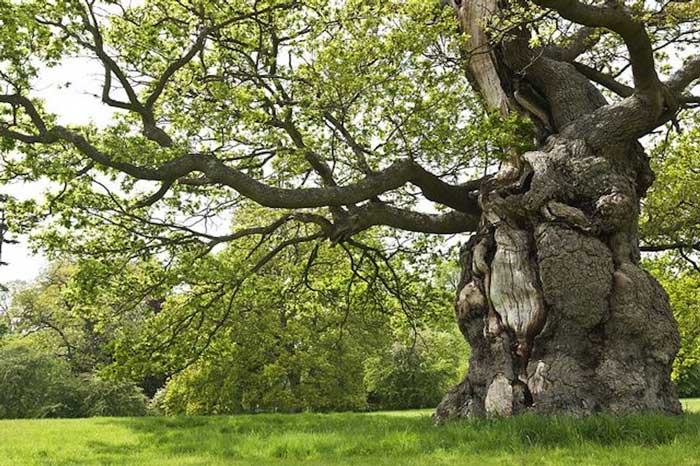How Much Does Oak Tree Weigh: Essential Factors Explained
When you’re considering the weight of an oak tree, it’s essential to grasp the vastness of its mass. Oak trees, renowned for their strength and durability, aren’t just hefty because of their trunks. The weight of an oak tree encompasses its trunk, branches, and a surprising amount of leaf mass. For instance, an English oak with about 200,000 leaves can weigh up to 200 kilograms just from its foliage.
Understanding the tree’s weight is crucial, especially if you’re planning to harvest it for lumber. The weight varies significantly depending on the tree’s size and age, with the trunk being the heaviest component. Different oak species might have slight variations, but they generally follow similar weight calculations. Whether you’re an arborist or a homeowner, knowing the weight of an oak tree ensures safe handling and effective planning for any project involving these majestic giants.
Key Takeaways
- An oak tree’s weight includes not just its trunk but also its branches and leaf mass, with leaves alone contributing significantly to its overall weight.
- The size and age of the oak tree heavily influence its weight, with factors like Diameter at Breast Height (DBH) being essential for estimations.
- Oak species vary in wood density, affecting weight calculations; denser wood equals a heavier tree.
- Moisture content is a key factor as it adds to the tree’s mass, making freshly cut or “green” wood notably heavier than seasoned wood.
- Correctly estimating the weight of an oak tree is crucial for safe handling and planning in lumber harvesting, construction, and art projects, aiding in operational efficiency and environmental conservation.
Understanding Oak Tree Weight
Oak tree weight is significant, encompassing not just the trunk but also branches and leaves. Estimating an oak tree’s weight requires consideration of several factors like the diameter at breast height (DBH), total height, and species type.

Estimation Methods
- DBH and Height Calculations: Research from the Arkansas Forest Resources Center provides equations to estimate weight based on DBH and height. For instance, a post oak with a 60-inch DBH and 90 feet in height has a merchantable weight of about 2.22 tons.
- Species-Specific Adjustments: Oak species vary in wood density, affecting weight. Weight calculations should adjust for these differences.
Weight Data
The table below approximates green log weights for various tree species, illustrating how oak logs compare:
| Diameter (in) | Ash Green | Bald Cypress | Butternut | Cedar Incenses | Cedar Eastern Red | Black Cherry | Cottonwood |
|---|---|---|---|---|---|---|---|
| 12 | 185 | 200 | 180 | 175 | 110 | 175 | 190 |
| 18 | 740 | 900 | 725 | 705 | 440 | 705 | 770 |
| 24 | 1150 | 1250 | 1130 | 1100 | 685 | 1100 | 1200 |
| 30 | 1580 | 1800 | 1450 | 1410 | 880 | 1410 | 1540 |
Leaf and Branch Weight
The weight of leaves and branches also contributes significantly:
- Leaf Weight: English oak leaves weigh about 0.67 grams each. With about 200,000 leaves, their combined weight can reach 200 kilograms.
- Branch Structure: Recent growth in branches additionally impacts weight, though lighter compared to the dense trunk.
Understanding oak tree weight is crucial, especially if you’re planning to use the wood for construction or art. Accurately assessing this weight ensures safe handling and efficient project planning.
Factors Influencing Oak Tree Weight
Determining the weight of an oak tree involves considering several key factors. Each element impacts the tree’s overall mass, which is crucial for effective project planning and safety in handling.
Tree Age and Size
Age and size significantly influence an oak tree’s weight. The Diameter at Breast Height (DBH) is a standard measure, taken at 4.5 feet above the ground. A DBH of 40 cm equates to roughly one cubic meter or one tonne of wet wood. For estimating purposes, DBH is combined with total height to calculate volume and weight, using tools like volume tables or nonlinear regression equations. Understanding the size metrics of your oak tree aids in making accurate weight estimations.
Wood Density
Wood density varies among oak species, affecting weight assessments. Denser wood suggests a heavier tree. Solid wood’s specific gravity is around 1.5, equating to approximately 1500 kg/m³ (936 lb/ft³) when no air or moisture exists in cell pores. Species containing higher quantities of organic extractives like resins and oils will have increased density. Knowing the specific wood density helps refine your weight calculations, ensuring precision.
Moisture Content
Moisture content directly influences an oak tree’s weight. Wood absorbs and retains water, adding to the mass. The weight differs based on how much water is present, known as the wood’s moisture content. For instance, freshly cut (green) wood will weigh more than seasoned wood due to higher moisture levels. Recognizing the moisture content of your oak maximizes accuracy in your estimations.
Estimating Oak Tree Weight
Accurately estimating an oak tree’s weight helps with lumber harvesting and safe handling. Key methods include measuring volume and using specific density values.
Tools and Techniques
Several tools and methods assist in estimating oak tree weight. Diameter at breast height (DBH) provides a standardized measure for calculating tree volume. Use a diameter tape to measure DBH, adding precision to your estimates. Laser devices or clinometers measure tree height effectively, contributing to accurate weight calculations. Online calculators, like those from WoodWeb, streamline weight estimation by incorporating these parameters. These tools ensure precision, increasing safety and efficiency in handling oak wood.
Calculating Weight from Volume
Calculating oak tree weight involves understanding its volume and density. First, calculate the tree’s volume by considering its height and DBH. Then, multiply this volume by the average density of oak wood. Use specific gravity, averaging 0.59 for oaks, combined with moisture content to find density. For instance, a green oak’s density, adjusted for moisture content of around 71%, is approximately 63 pounds per cubic foot. This calculation provides a reliable estimate, ensuring you understand the weight of the oak you plan to handle or harvest.
The Significance of Tree Weight
Understanding an oak tree’s weight is crucial for environmental and practical reasons. Estimating the weight helps in ecological studies and various fields like construction and art.
Environmental Impact
Tree weight impacts the environment by influencing carbon storage, biodiversity, and habitat characteristics. A mature oak tree supports a wide range of wildlife and stores significant carbon, contributing to climate regulation. The presence of large, weighty trees in an ecosystem often indicates a healthy and robust environment. For example, the dense wood and rich foliage of an oak tree provide shelter and resources for numerous animal species, playing a pivotal role in sustaining local biodiversity.
Practical Applications
Tree weight is pivotal for industries relying on timber, such as construction, furniture making, and energy production. Accurate weight estimations facilitate safe felling, transport, and processing. For instance, knowing the weight of an oak tree helps determine the equipment and manpower required for safe logging operations. In construction, precise knowledge of wood weight ensures structural integrity and safety. Additionally, artists using oak wood in sculptures or installations benefit from understanding its weight to plan for stability and support in their creations.
Understanding these applications underscores the importance of estimating oak tree weight accurately and efficiently. Proper estimations reduce risks and enhance productivity in industries dependent on oak wood.
Conclusion
Understanding the weight of an oak tree is crucial for both environmental and practical applications. Whether you’re involved in construction, furniture making, or simply interested in the ecological benefits of these majestic trees, accurate weight estimation is essential. By considering factors like diameter at breast height, total height, species type, and moisture content, you can make informed decisions. Utilizing tools and resources such as online calculators and specific density values further aids in achieving precise calculations. With this knowledge, you can ensure safe handling, effective project planning, and contribute positively to environmental conservation efforts.







